There are a lot of similarities with raptor beaks. Previously we have seen how similar and different they can be within the same phylogenetic order of Accipitriformes. Now, we will compare three completely unrelated orders: Falconiformes, Strigiformes, and Cathartiformes.
Before we dive into our raptorial friends again, we should review some returning terms. I have underlined words that will be important and reused throughout this article.
A bird’s beak is made up of a bony core and a keratinous sheath. The bone provides rigid support while the keratin gives flex and will continue to grow and repair over the bird’s life.
The maxilla is the upper jaw, while the lower jaw is called the mandible. Since birds cannot grasp with their forelimbs, they must use their mouths to manipulate objects. Known as cranial kinesis, both the maxilla and mandible can move independently of each other. This is only seen to a small extent with raptors but much more so in birds like parrots and macaws.
Cere is the leathery skin near the base of the bill. I’m still not entirely sure of its purpose, but the most accepted use is to protect the nares.
The nares are the nostrils of a bird. It is more accurate to call them nares because most birds have an incomplete septum between each opening, called perforated nares. I will talk about that more and the importance of perforated nares in this article.
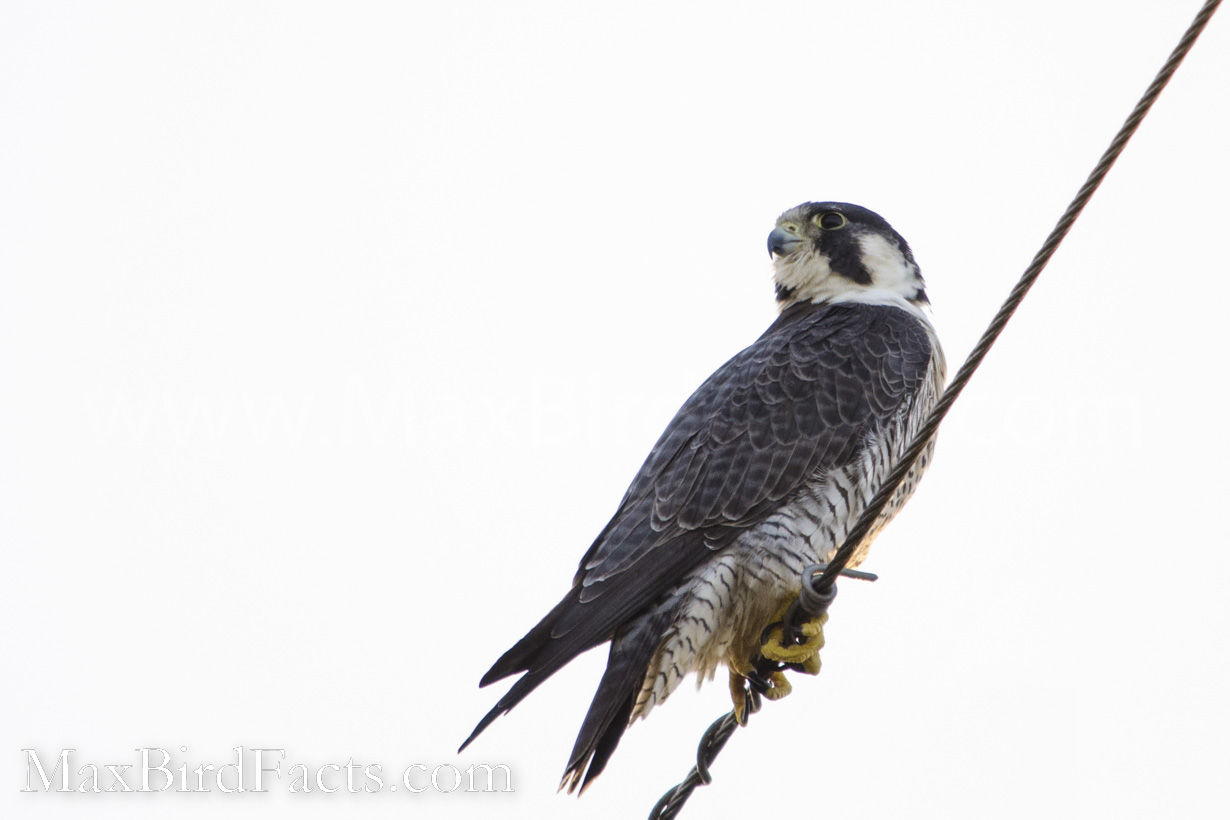
If you want to have a more detailed look at these features and terms, please check out these previous articles:
Bird Beaks Part 1: Basics and (Mostly) Herbivorous
Bird Beaks Part 2: The Different Beaks of Hawk-like Raptors (Accipitriformes)
A purely carnivorous diet drives the common traits between all of these birds. They all need to be able to rip and tear away the flesh from their victims.
A curved maxilla, usually sharpened, and strong neck muscles aid in this.
The particular niche the raptor fills will cause modifications to the beak and head. We will see a lot of this specialization within these individual genera of birds.
I have organized the six sections of this article by the bird’s phylogenetic genus. The genus is the most specific level I can go to before sorting by individual species.
Sickle-clawed Falcons (Falco)
The classic bird that comes to my mind when thinking of a raptor is a falcon. These agile birds have adapted to hunt in flight, snatch small game from trees and the ground, and even reach the highest speeds of any living animal!
Most falcons have a compact beak with a very strongly curved maxilla. This allows them to pull apart their prey very handily without the risk of damaging their jaws.
There is an exciting feature some of these birds of prey possess. On the maxilla, there is a ridge near the beginning of the downward arc of the hook. This ridge is called the tomial tooth.
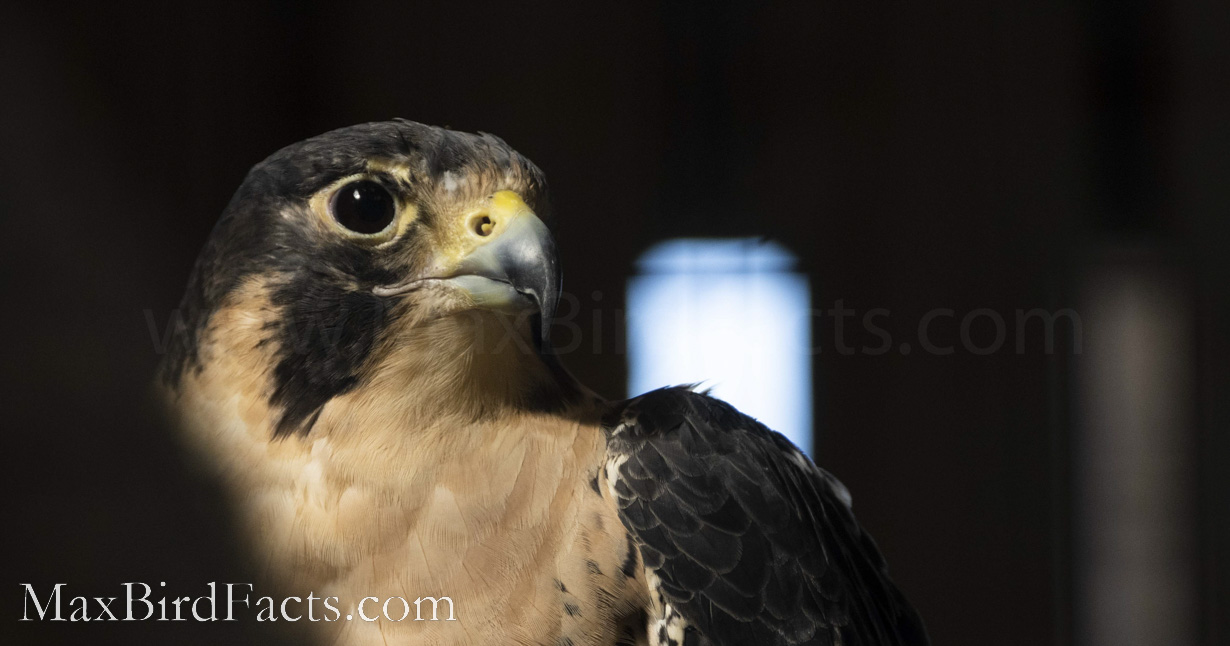
The mandible will sometimes have a cutout for the tooth to rest, while other times, it is thinned. This recess allows the maxilla and mandible to close completely.
A short, deeply curved maxilla with the mandible molded to precisely fit it.
The mandibular fossa (dent) allows the beak to close and acts as a resting point for the victim’s neck. Once the falcon has captured the bird, it will use the tomial tooth to break its neck.
The tooth acts as a guillotine, focusing the force of an otherwise weak bite into one specific spot to maximize its effectiveness. The lower jaw’s indent places the prey’s neck in the perfect location for an efficient and instantaneous death.
The notch on the lower jaw can range from a narrowed portion to a distinct cutout. The complexity of this feature is determined by how prominent the tooth is.
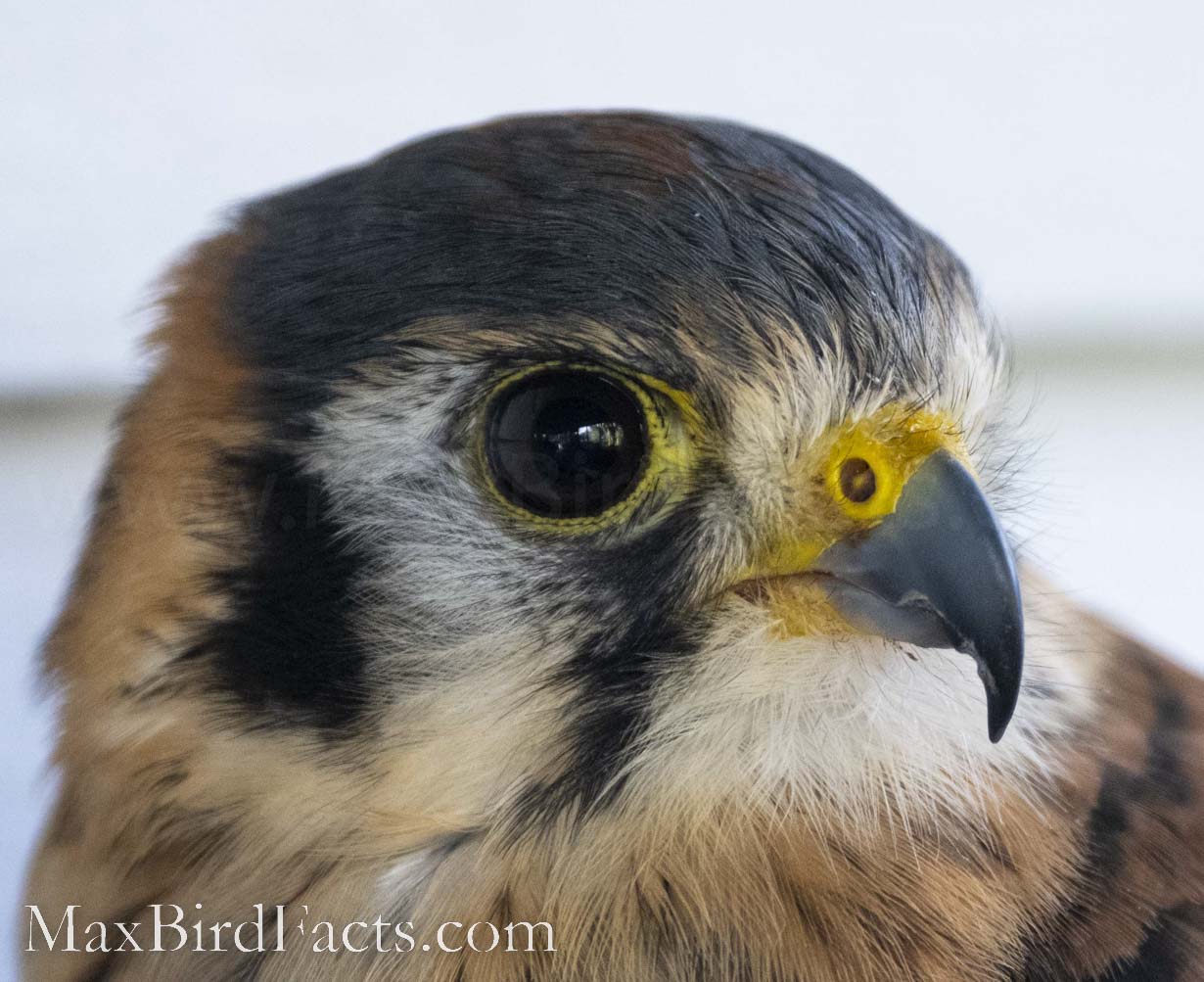
Falcons will usually use the tooth as a final verification their prey is dead. The typical way a Peregrine Falcon will kill its target is by punching it with a closed talon while divebombing, reaching speeds around 200 miles per hour.
Once they have killed their prey, they will work with their maxilla’s sharp hook and edges to remove feathers and get to the flesh. The shortened length of their beak helps keep the strain down on their neck as they pry away the tissue.
The raptor will remove the feathers and fur before starting to feed. These protective structures are made of keratin, which is nearly impossible to digest and has no nutritional value.
If you are on a hike or out in the local park and you see a patch of feathers in the grass, chances are you found the spot where a raptor had a picnic.
Caracara Falcons (Caracara)
Within the order of Falconiformes lies the genus Caracara, made up of two recognized species. Crested Caracaras are scavengers and have somewhat generic bills to fit this niche, but some unique features.
The beak is simple but is much larger overall compared to the previous hawks and falcons. The separation of keratin and flesh on the jaws is more apparent with these birds.
Keratin starts roughly halfway down the jaws, with a sharpened edge on the maxilla, with the mandible compressed to fit inside.
The Crested Caracara’s hooked maxilla is taller and heavier as well. This support allows them to get inside thick-skinned carrion more effortlessly but permits them to go after smaller prey.
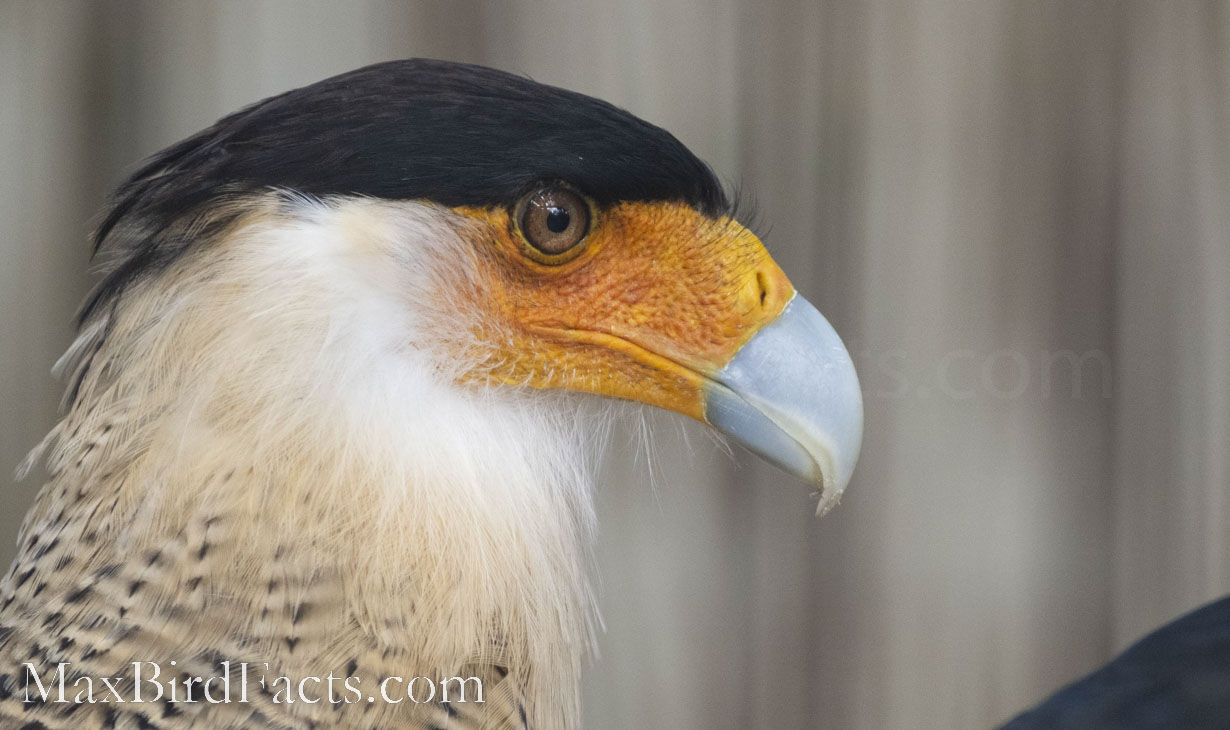
The nares are positioned near the base of the maxilla’s keratin sheath, nearing the top limit it can reach.
Their cere is also noticeably different. Instead of the usual yellow pigment of the skin in hawks and falcons, theirs is bright orange.
The skin of the maxilla and mandible is also exposed and devoid of feathers until the base of the jaws and behind the eyes. They can use this bare skin for communication.
Crested Caracaras can change the skin’s color by flushing blood to vessels under the skin in the face. When at rest, the skin is the regular orange. If they feel threatened, the skin becomes more yellow.
The bare skin could also be an adaptation to keep their heads cleaner when digging inside a larger prey animal. Feathers may trap bits of rotten flesh and putrid fluids that could fester and infect the bird.
This isn’t a widely accepted theory because many other carrion-feeding animals have fur or feathered heads. I think this could be a side benefit behind the need for communication, but let me know what you think.
Eagle/Horned Owls (Bubo)
Owls are a very different kind of bird compared to our previous raptors. They typically hunt at night, choose to be as stealthy as possible, and have some of the bird world’s best ears.
The beaks of these birds can be somewhat hard to see because of their silent lifestyle. Like the Great Horned and Eagle Owls, large nocturnal owls are covered in soft, fluffy feathers.
These feathers absorb sounds that would otherwise reflect off their body, warning their prey of the owl’s presence. These feathers are seen particularly well around the beak of the bird.
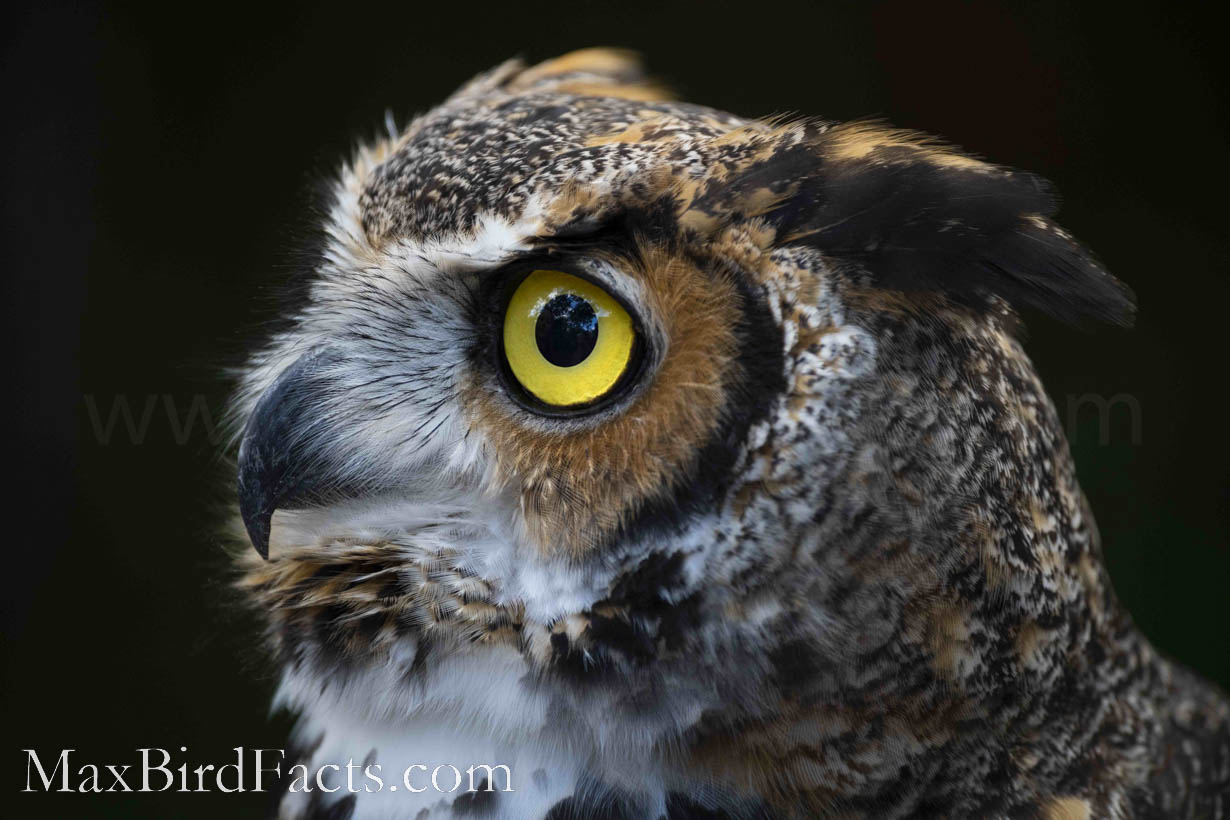
The feathers surrounding the beak make it look very stout and compact, but once we look past the feathers, it appears very similar to that of a hawk.
Again, the beak is simple in design, with flat edges on the maxilla and mandible. The mandible is fitted into the maxilla as well, with the maxilla ending in a proud hook.
Cere in this genus of raptors is drab, usually a gray, brown, or black hue. The nares of these owls are somewhat interesting.
The nares are positioned facing forward because of the cloaking of feathers on the beak’s sides and base. This allows the owls to have an accurate sense of smell without air passing through the feathers.
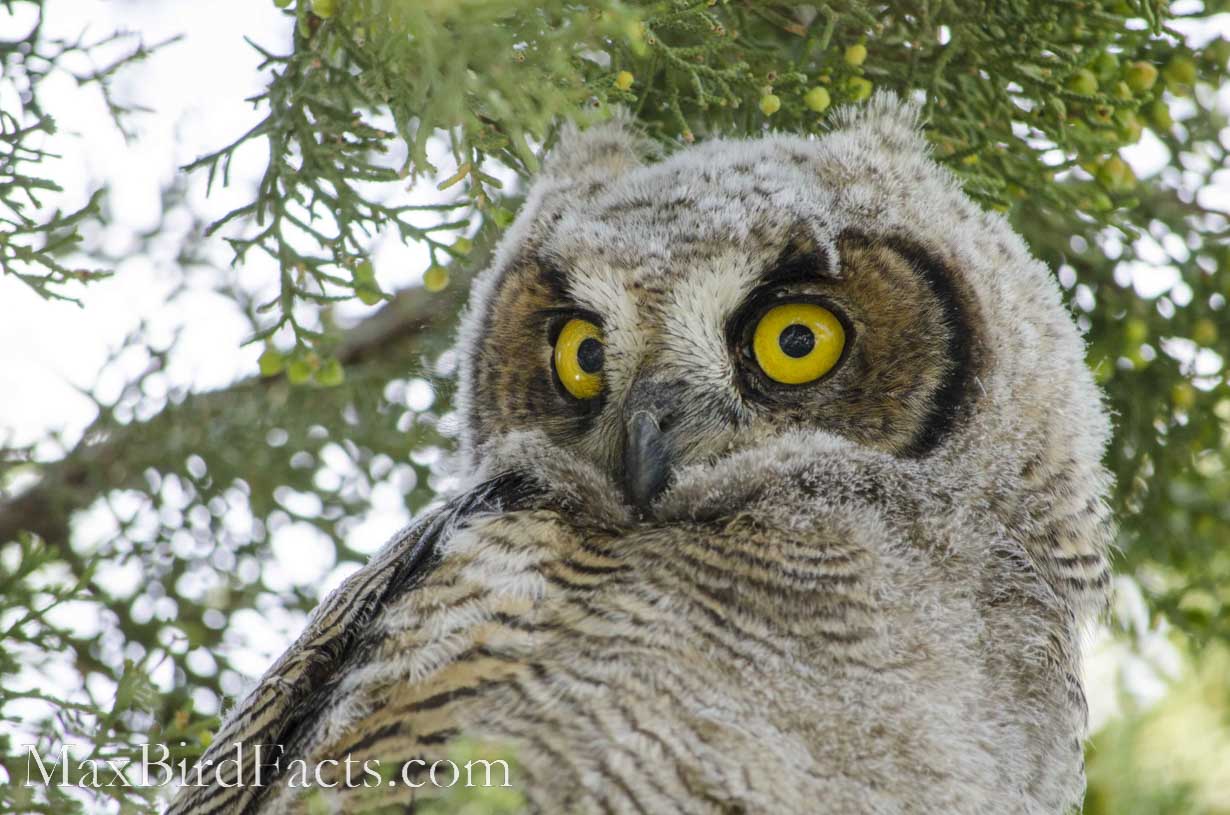
The position of the nares also makes it more efficient for the bird’s breathing. If they were located more laterally (on the sides), the owl’s hot breath would become trapped in the feathers. And when the bird breaths in, it doesn’t have to fight the resistance the feathers would cause while drawing in air.
Just like with our previous birds, their generic beak style helps them survive in countless environments.
Screech Owls (Megascops)
Screech Owls are essentially just miniaturized versions of their larger cousins Bubo. Since they fill the same ecological role, this isn’t very surprising.
Megascops love eating small vertebrates, and one of their favorite prey items is songbirds. They are agile fliers and very powerful for their size.
The foot style they have, zygodactyl, gives them massive grip strength to hold onto struggling prey. Once pinned, they use the strong, sharp point of their maxillary jaw to finish it.
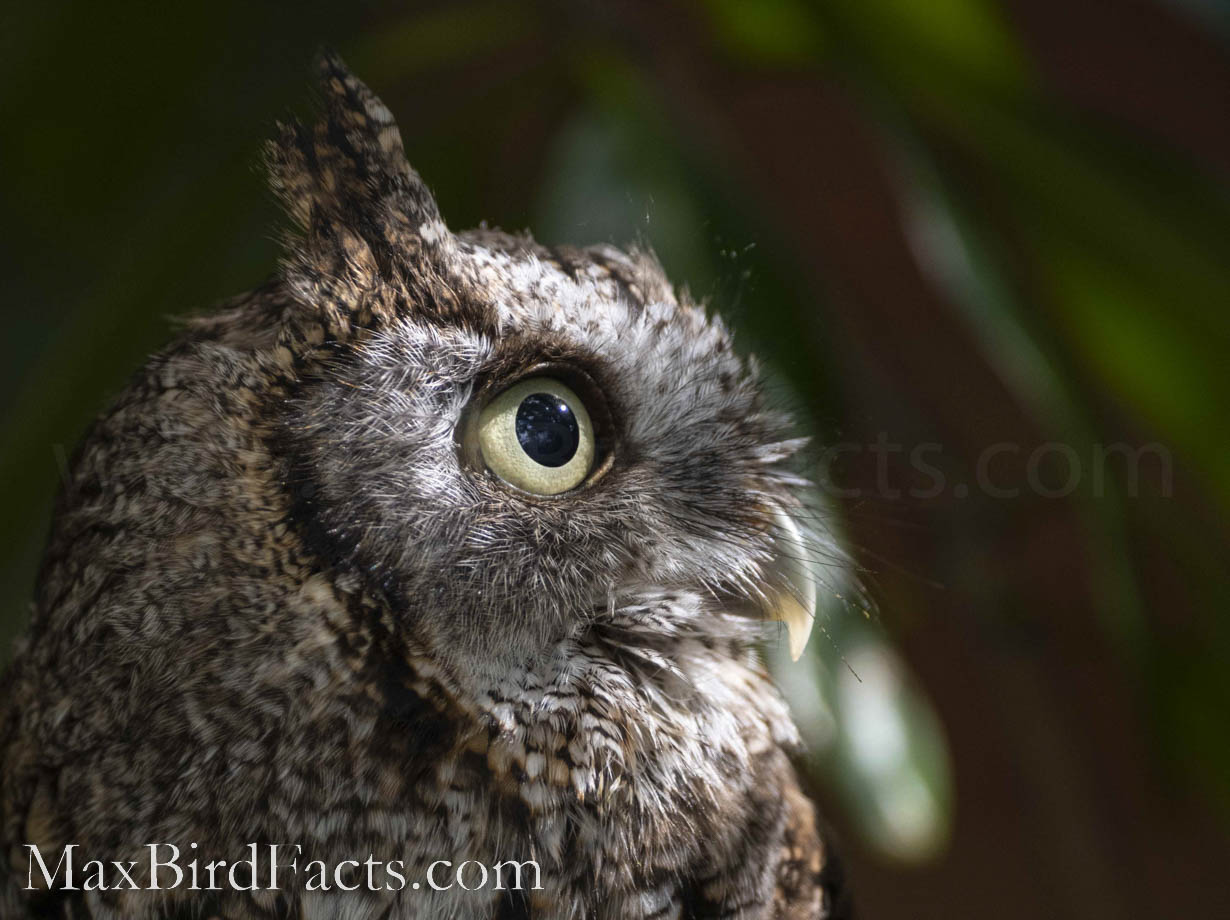
The beaks on these little owls are very similar to Bubo. The feathers surrounding the bill make it look smaller than it is.
Slightly sharpened edges start at the base of the hook with the maxilla. The mandible again fits into the maxilla so the mouth can fully close.
Like their larger cousins, the cere is somewhat modest, usually a cream or whiteish-yellow coloration. Keeping this skin a more dull color helps keep the owls camouflaged.
The nares also carry on with the similarities, facing forward rather than on the maxilla’s sides. This is for the same reasons we talked about with the Horned Owls.
Raven Vulture (Coragyps)
Black or Raven Vultures start to show some adaptations to a primary carrion-feed lifestyle.
The maxilla slopes gradually to the base of the keratin sheath, where it forms a slight recurve before turning sharply down into the pointed tip. The mandible fits into the upper jaw and only has a short keratin tip for prying away flesh.
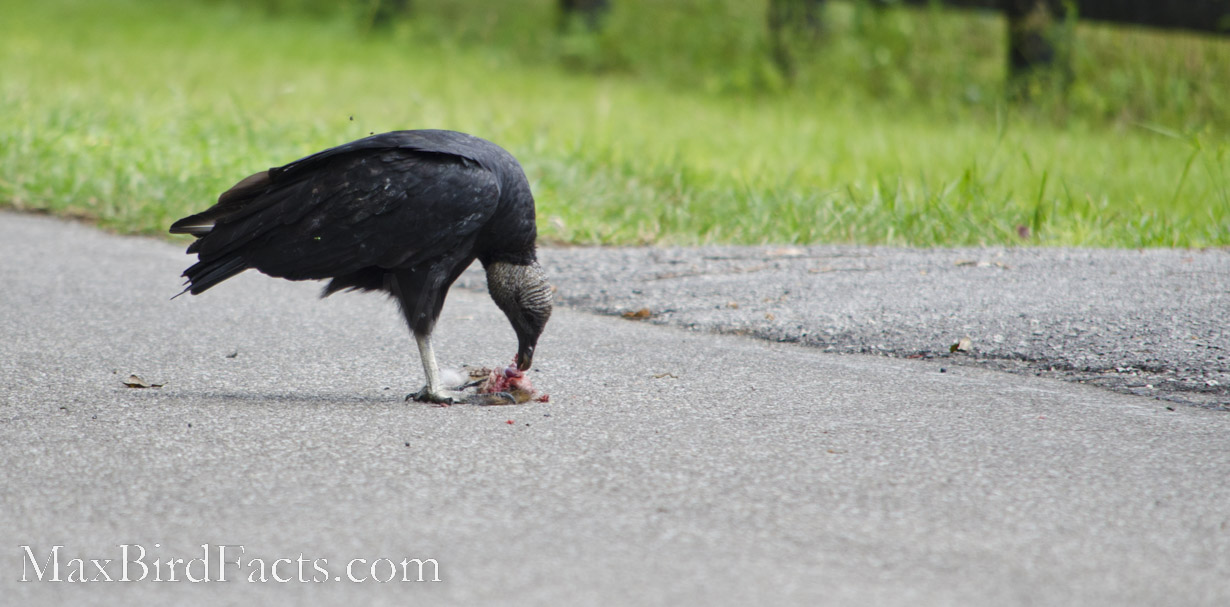
The overall shape of the beak is much more slender and elongated than our previous raptors. If it were broad and bulky, the vultures would have a much harder time getting inside of larger prey.
Instead of going for a more powerful bite, vultures have adapted to be pickier. Meaning, they can use these narrow beaks to precisely pick at what they need from the softened, decaying flesh of their prey.
The head lacks feathers until the base of the skull, and there is no discernable cere. The nares are where we can begin to see some adaptation.
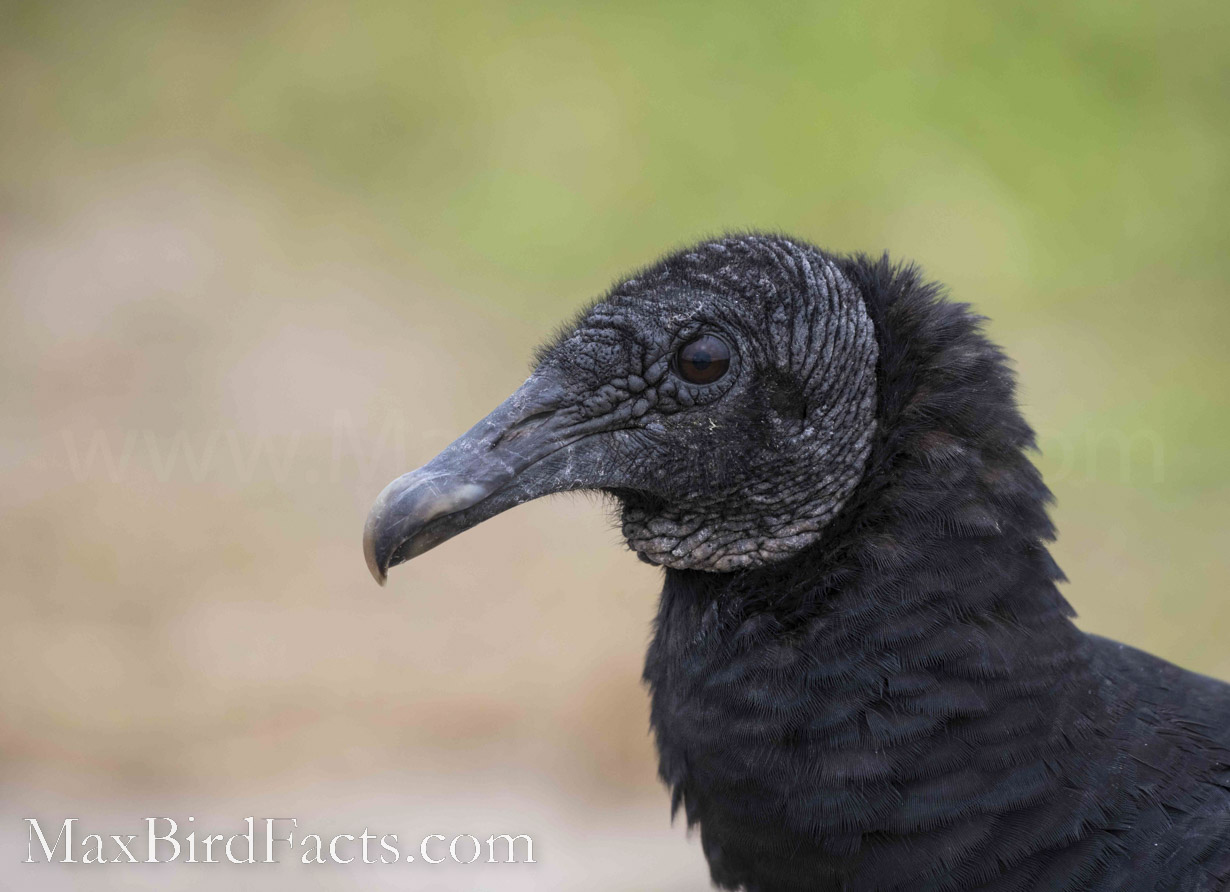
Black Vultures start to show perforated nares, but they are less developed than our next bird. The top of the nose is nearly flush with the rest of the head, but it is opened enough to have large, horizontally slit-shaped nostrils.
The smaller nasal passage doesn’t allow as much air to be collected, reducing their olfactory efficiency. So much so that Black Vultures will typically fly, looking for huddled masses of other feasting vultures. Conversely, Turkey Vultures take flight to seek out undiscovered treasures.
Purifier Vultures (Cathartes)
Vultures are the unsung heroes of birds. People see them as horrid, disease-carrying pests that hop around fly-covered roadkill. But if they didn’t pick at the remains of the dead, our roadways would be covered in rotting corpses, and disease would be widespread.
Vultures are a necessary part of the cycle of nutrients in an ecosystem. They help remove putrifying remains of organisms from an area and make their nutrients available for use again.
This importance wasn’t lost on Linnaeus when naming this genus Cathartes, meaning “purifier” in Greek. He, along with many other naturalists, appreciated the work these raptors do.
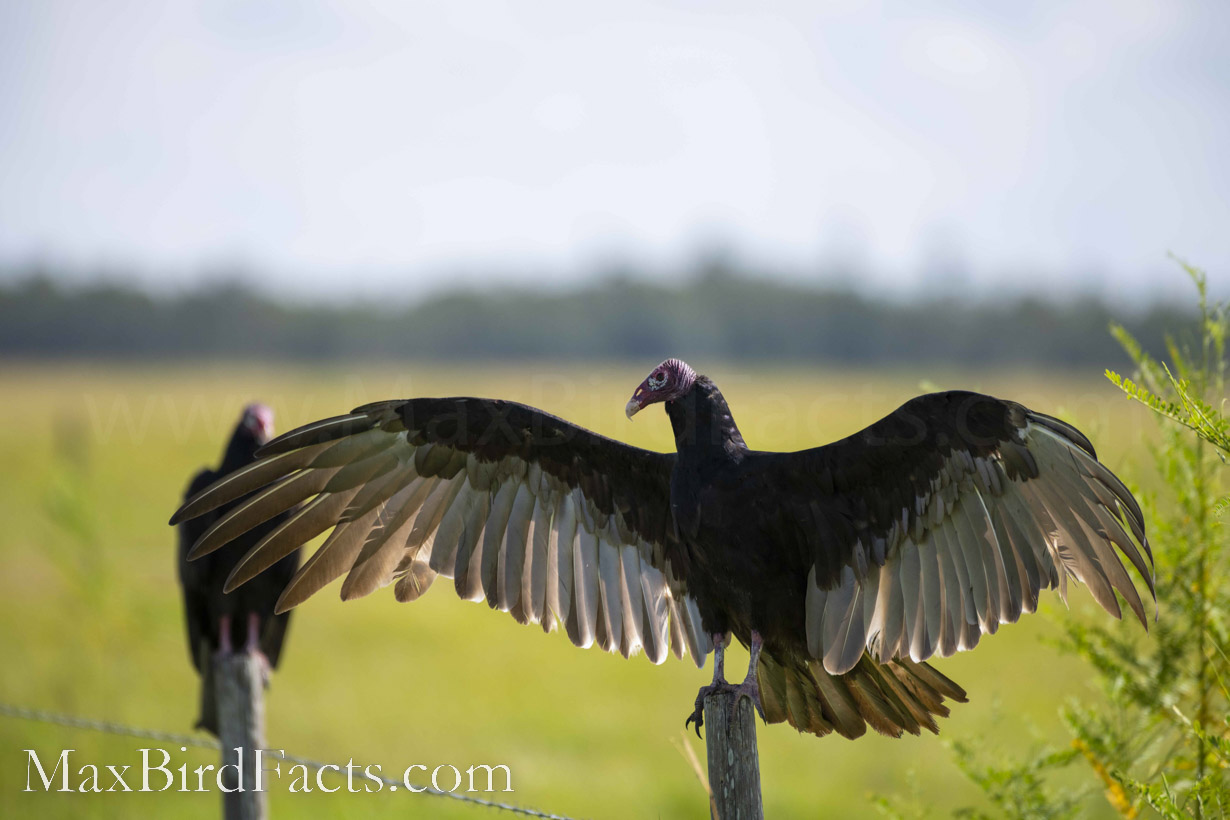
These birds’ beaks nearly have a bone-white appearance, but that is just the keratin sheath’s coloration. Here we can see a mix of some aspects of the birds we’ve covered earlier.
The maxilla has a slight downward curve leading up to the beginning of the keratin. Just before the hooked tip’s sharp drop begins, there is a recurve in the maxilla.
The recurved portion doesn’t appear to be sharpened, but the hook is profiled to a cutting edge once it terminates. The maxilla’s tip ends in a sturdy, sharp point that can easily cut into the flesh of a decaying animal.
The mandible is nestled into the maxilla, as seen before with all our raptors.
Similar to the Black Vulture, the beak is narrow, allowing the bird to grab onto a chunk of flesh precisely. The sharpened hook will permit them to have some cutting ability, but they will primarily pick apart their victims.
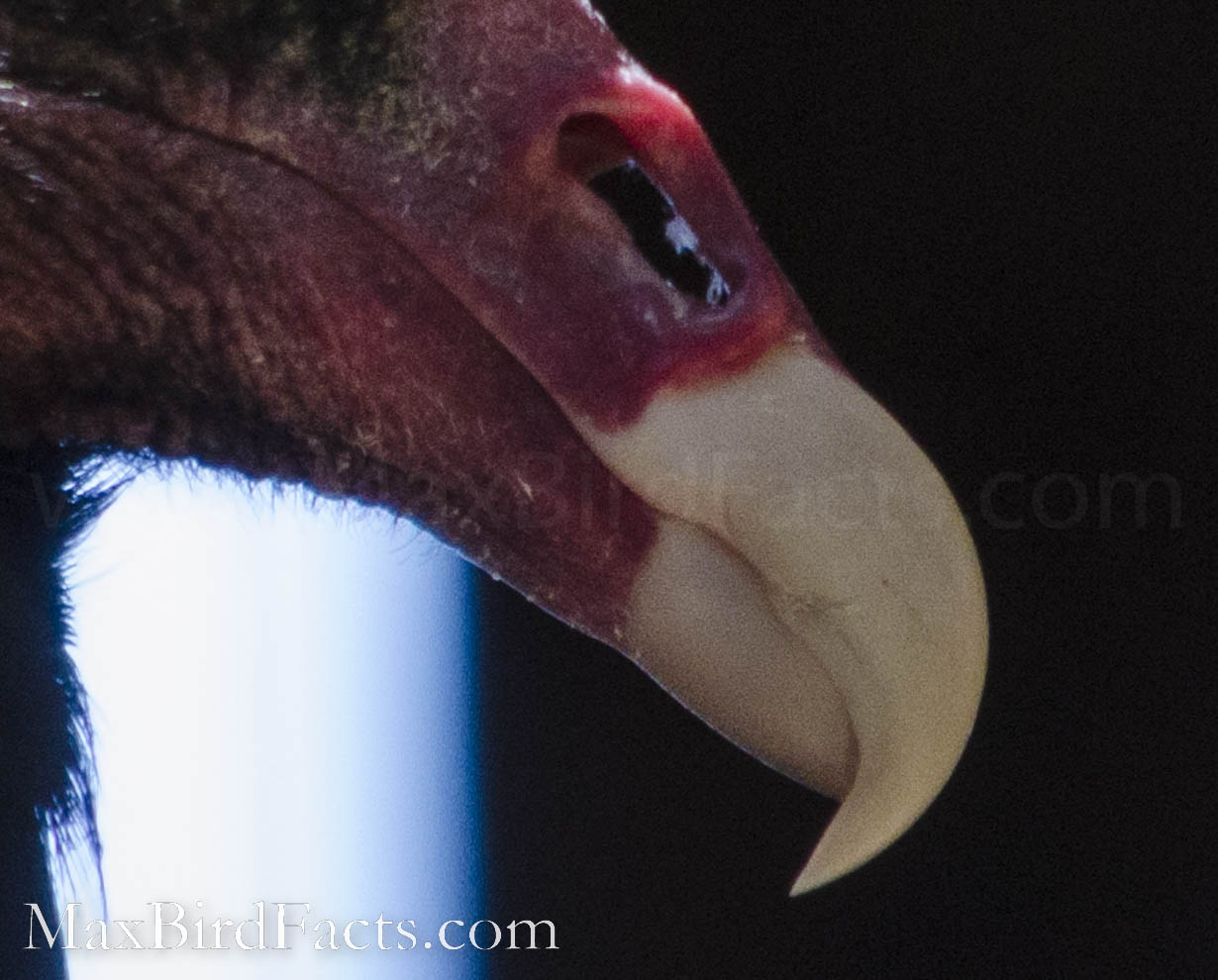
The head of the vulture is bare until the base of the skull. There is no noticeable cere, and the nares are even more bizarre than the Black Vulture.
We finally see the true perforated nares we brought up initially (I know that was a while ago). Turkey Vultures use this adaptation to increase the amount of air they can process for their prey’s smelly particulates.
Since there is no cartilage separating the nostrils, vultures can suck in more air with each breath. A larger-than-average olfactory bulb in the brain gives these birds one of the best senses of smell in the animal kingdom.
Unlike the Black Vultures, the top of the nose arches upwards, allowing the nares to be even larger. This increased area allows more air to be processed for smelly particles and gives these vultures a better chance of finding their next meal.
Butcher Birds (Lanius)
This genus isn’t a member of the raptors, but I think it deserves an honorable mention. Shrikes are found worldwide, but here in Florida, the Loggerhead Shrike blesses us.
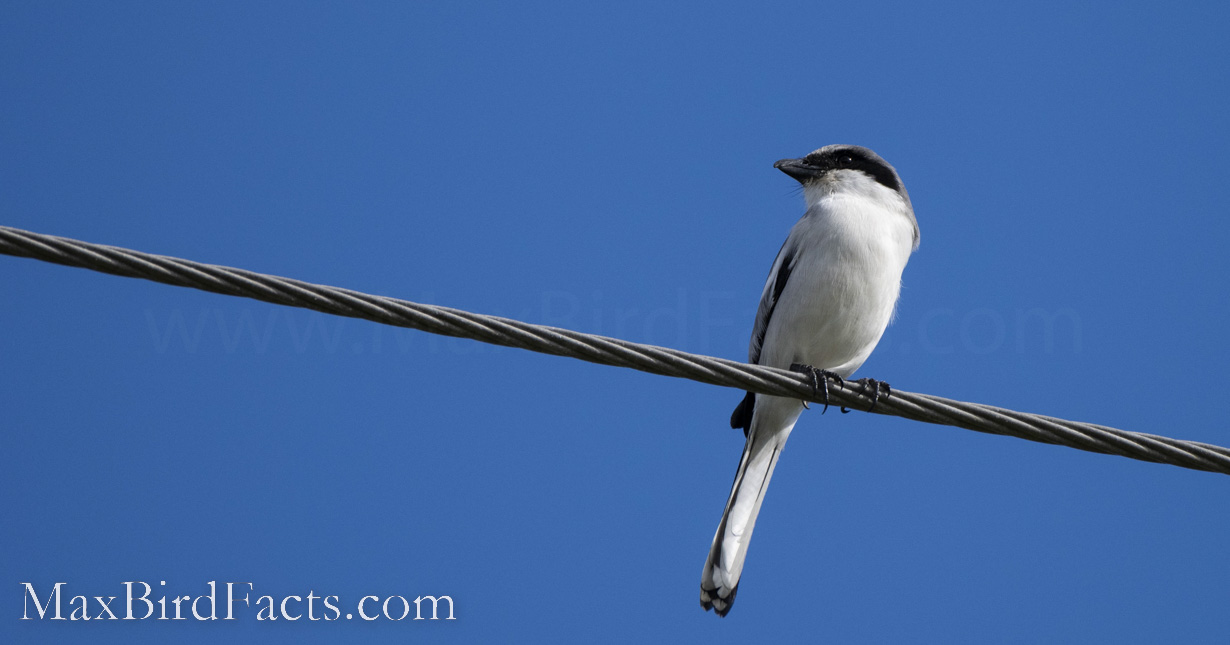
These little songbirds are deceptively vicious, and they earned the name Lineaus gave them. Shrikes will catch their prey and impale them onto thorn bushes or barbed wire, using this similar to a butcher’s meat hook while they pick apart their victims.
I am adding them into the same grouping as these raptors because these little birds also have the tomial tooth!
They use the tooth in the same way the falcons use them, dispatching their prey quickly, making it safer for the shrike, and lowering their risk of injury.
The maxilla is very straight leading up to the tooth, and then it takes a very sharp downward curve to a fierce point. There is no cere with shrikes because cere is uncommon in Passerines.
These little murderers show more of a cutout in their mandible for the tooth rather than the fossa. This is what we saw in Falco above.
They can’t grasp their prey as other raptors do, and genetically they are nowhere near related to them but are a perfect example of convergence.
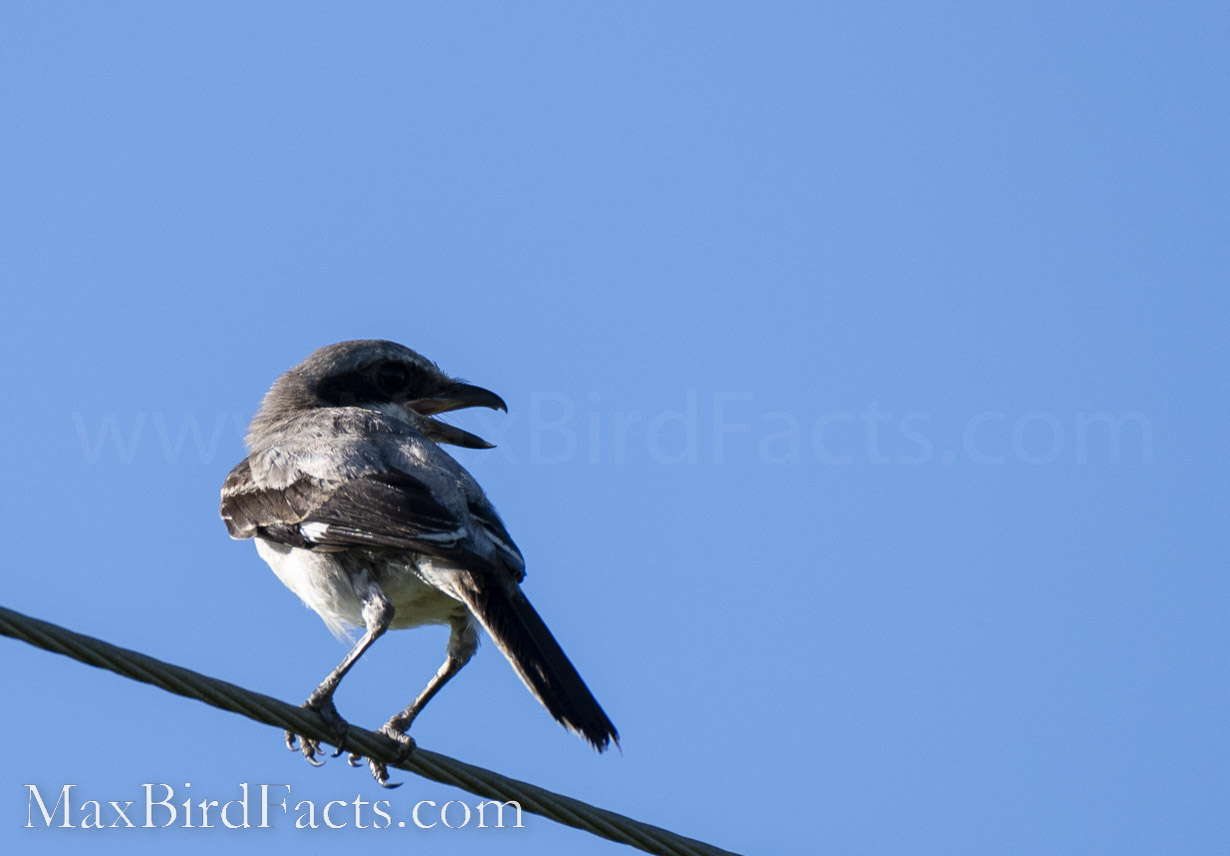
Convergence is when two unrelated organisms share a common trait. The most famous example of this is the body shape of dolphins, sharks, and ichthyosaurs.
All are marine animals, share a torpedo-like body, and use their tail for propulsion. However, dolphins are mammals, sharks are cartilaginous fish, and ichthyosaurs are reptiles.
There are scores of other differences between these animals, but that isn’t necessary to go into for my point.
None of these groups of animals have had a common ancestor for hundreds of millions of years, but they came to the same answer to a problem nonetheless.
This is the same with our shrikes and falcons, not related but using the same tools of the trade.
The Takeaway
After going through all of these birds, we can appreciate the similarities they share. These raptors all have a sharply curved beak with some level of cere or exposed flesh to protect the nares.
The birds’ nares are forward-facing, allowing them to have an outstanding sense of smell and efficiency while breathing.
There are some vast modifications within some of these genera too. We saw the tomial tooth in Falco, the perforated nares in Cathartes, and extensive feather coverings of the beak with Bubo and Megascops.
I hope you’ve gained a newfound appreciation for the small details that make these birds so unique.
Thank you so much for reading to the end of this. I hope you walk away learning something new after reading this.
Let me know of any other topics or birds you would like to learn about in the comments below.
Make your day great!
Max

Pingback: Why Do Vultures Circle – Thermal Soaring and Opossum Pancakes – Welcome to MaxBirdFacts.com!!!